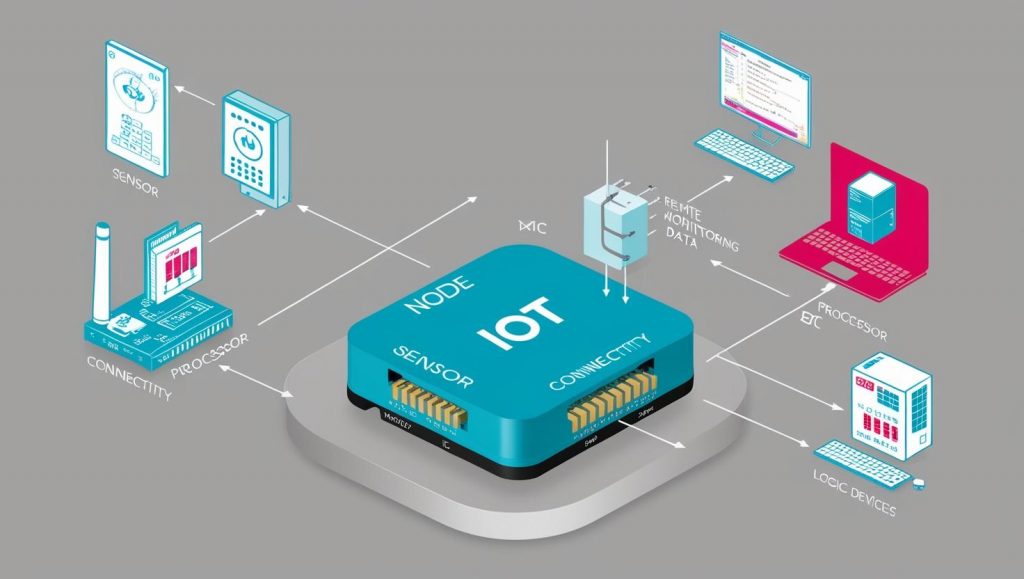The Internet of Things (IoT) has already revolutionized various industries, from manufacturing and healthcare to smart homes and transportation. However, its true potential is being realized as Artificial Intelligence (AI) becomes an integral part of the IoT ecosystem. The combination of AI with IoT technology is unlocking new capabilities, transforming devices into intelligent systems, and creating predictive, self-optimizing networks. This shift is not just enhancing operational efficiencies but also enabling new business models and capabilities that were once unimaginable.
Explore how AI is reshaping the IoT Technology industry, with a focus on its impact on smart devices and predictive networks, and how it is driving innovation across multiple sectors.
The Rise of Smart Devices: More Than Just Connected
Historically, IoT devices were designed primarily to collect data and communicate it to other systems for processing. However, the integration of AI into these devices has transformed them into autonomous, intelligent systems that can make decisions on their own.
Smart Sensors and Edge AI: Enhancing Real-Time Decision Making
With AI at the edge, smart devices can now process data locally, reducing the need to send large amounts of data to centralized cloud servers. This enables real-time decision-making, which is particularly crucial in industries like healthcare, manufacturing, and automotive. For instance:
-
Healthcare wearables can monitor vital signs and trigger alerts in real-time if irregularities are detected, without waiting for cloud processing.
-
Smart home devices such as thermostats and lights can learn user behaviors and preferences, adjusting automatically without human input.
-
Connected vehicles can analyze real-time data from sensors to enhance safety features and improve route optimization.
By incorporating AI, IoT devices are no longer passive sensors but active participants in their ecosystems, delivering actionable insights with minimal latency.
Predictive Networks: The Next Frontier of IoT
One of the most powerful ways AI is reshaping the IoT Technology industry is through the development of predictive networks. These networks can anticipate future events, identify potential issues before they arise, and take corrective actions without human intervention. This predictive capability is revolutionizing sectors like manufacturing, logistics, agriculture, and smart cities.
Predictive Maintenance: Revolutionizing Industrial Operations
In the industrial sector, predictive maintenance is a game-changer. Traditional maintenance schedules are often based on fixed intervals or reactive approaches, which can be inefficient and costly. However, by integrating AI and IoT sensors, machines can now predict when they are likely to fail based on real-time data from equipment, such as vibration levels, temperature, and performance metrics.
This data is processed by AI algorithms that identify patterns and provide maintenance teams with actionable insights on the optimal time to perform maintenance, thereby avoiding unplanned downtime and reducing maintenance costs. AI-driven predictive maintenance is increasingly used in industries like automotive, energy, and manufacturing, where equipment uptime is critical to operational efficiency.
Download PDF Brochure @
https://www.marketsandmarkets.com/pdfdownloadNew.asp?id=258239167

Supply Chain Optimization: Predicting Bottlenecks and Delays
AI-enabled IoT devices are also reshaping supply chains by providing predictive analytics that improve inventory management and logistics. With AI-powered IoT sensors embedded in shipments and vehicles, businesses can track the location and condition of goods in real time, while predicting potential delays and identifying bottlenecks. For instance, AI can analyze data from weather patterns, traffic reports, and shipment tracking to predict delays and suggest alternative routes or supply chain adjustments before disruptions occur.
AI and IoT Convergence: Enabling Smart Cities
In smart cities, AI-powered IoT devices work together to create self-managing urban ecosystems. From traffic management systems to smart energy grids, these cities leverage IoT sensors to gather data and AI to analyze it in real-time, optimizing the environment for residents and businesses alike.
Traffic and Transportation: Smarter Mobility Solutions
AI-driven IoT systems are transforming urban transportation by enabling dynamic traffic control systems. Smart traffic lights can adjust based on traffic flow, reducing congestion and improving road safety. Connected vehicles, powered by AI, can communicate with one another to optimize traffic patterns, improve fuel efficiency, and enhance road safety by detecting potential hazards before they occur.
Energy Management: Reducing Waste and Improving Efficiency
AI-powered IoT systems are also revolutionizing energy management in smart cities. By using real-time data from sensors in homes and businesses, AI algorithms can optimize energy distribution, balance load across the grid, and predict energy consumption patterns. For example, smart meters and AI-controlled HVAC systems in commercial buildings can adjust temperature settings based on occupancy and time of day, significantly reducing energy waste and costs.
Challenges and Future Prospects of AI in IoT
Despite the many benefits, the convergence of AI and IoT comes with its own set of challenges. Data privacy and security concerns are top priorities, as the vast amounts of data generated by IoT devices can be vulnerable to cyberattacks. Ensuring that AI systems are secure, transparent, and accountable is critical for widespread adoption.
Moreover, scalability remains a challenge for many organizations looking to deploy AI-driven IoT solutions at a global level. As the number of connected devices continues to grow exponentially, organizations need robust and scalable networks to handle the data and the complexity of AI computations.
However, the future prospects for AI in IoT are bright. With advancements in edge computing, 5G connectivity, and AI chip development, the next few years will likely witness a rapid acceleration in the adoption of intelligent, autonomous IoT systems that seamlessly integrate with AI-driven processes across industries.
Conclusion: The Intelligent Future of IoT
The integration of AI and IoT is unlocking an entirely new era of connected, intelligent systems that are transforming industries, improving efficiencies, and providing more personalized experiences. From smart devices that adapt to their environments to predictive networks that optimize operations, AI is not just complementing IoT technology—it is fundamentally reshaping it.
As both AI and IoT continue to evolve, they will create even more sophisticated, self-sustaining ecosystems, offering businesses and consumers new opportunities for growth, innovation, and efficiency. The future of IoT is not just about connectivity—it’s about creating intelligent, autonomous systems that enhance decision-making and make our world smarter, safer, and more efficient.
